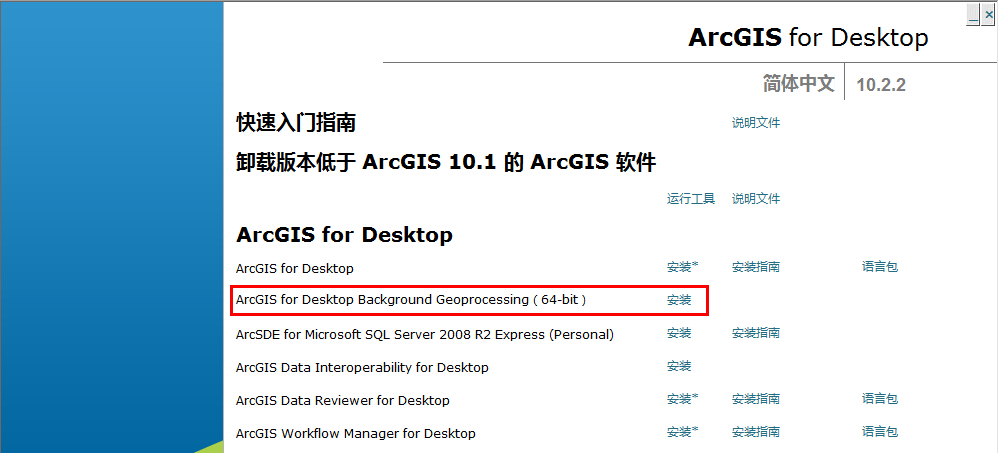(二)arcpy开发&arcpy中利用不规则矢量面在arcgis中批量裁剪影像
使用clip工具来裁剪图形一般是规则多边形,即一个范围裁剪是以最左点,最上点,最右点,最下点来确定范围线。如下图所示是一个范围线,该范围线是不规则的。

以及叠加上影像,按理来说应该是范围线内的部分。
下面我们来使用arcgis工具来裁剪一下影像。注意没有勾选【Use Input Features for Clipping Geometry(option)】


最后的裁决效果如下图所示。

而如果我们勾选了上面的选项,则最后的裁剪结果则是我们需要的。

而我现在需要做的工作是利用图幅结合表shapefile里面的数据,遍历其中每一条记录然后和影像进行裁剪,根据图幅分幅来说,矩形框并不是严格的长方形,而是梯形,因此我们这里需要使用多边形裁剪。按照网络的相关资料,可以使用ExtractByMask函数进行裁剪。但是在使用该函数的时候多次遇到拼接参数出现了问题,无奈只好使用了clip_Manager函数来裁剪。首先,在函数的开头遍历了所有的矢量面记录,然后使用矢量面去和影像进行裁剪,将影像按照FID作为裁剪后的名称保存。具体可以查看一下代码。
功能实现代码:
# coding:utf-8
import arcpy
import os
from arcpy.sa import *
def do(shpPathJHTB,importtif,resultPathTif):
with arcpy.da.SearchCursor(shpPathJHTB, ['FID', 'SHAPE@']) as cursor:
for row in cursor:
mask = row[1]
extent = str(mask.extent.XMin) + " " + str(mask.extent.YMin) + " " + str(mask.extent.XMax) + " " + str(mask.extent.YMax)
#outPath = outworkspace + "\\" + str(row.getValue(field) + outtype)
outPath=os.path.join(resultPathTif,str(row[0]) + ".img");
arcpy.Clip_management(importtif, extent, outPath, mask, "0", "ClippingGeometry")
打包代码:
# coding:gbk
import arcpy
#http://pro.arcgis.com/zh-cn/pro-app/arcpy/geoprocessing_and_python/defining-parameter-data-types-in-a-python-toolbox.htm
from PLiangClip import do
class Toolbox(object):
def __init__(self):
"""Define the toolbox (the name of the toolbox is the name of the
.pyt file)."""
self.label = "Toolbox"
self.alias = ""
# List of tool classes associated with this toolbox
self.tools = [Tool]
class Tool(object):
def __init__(self):
"""Define the tool (tool name is the name of the class)."""
self.label = "批量按照结合图表裁剪img"
self.description = "批量按照结合图表裁剪img"
self.canRunInBackground = False
def getParameterInfo(self):
"""Define parameter definitions"""
shpPathJHTB = arcpy.Parameter(
displayName="结合图表shp面数据",
name="shpPathJHTB",
datatype="GPFeatureLayer",
parameterType="Required",
direction="Input"
)
tifPath = arcpy.Parameter(
displayName="img影像",
name="tifPath",
datatype="DERasterDataset",
parameterType="Required",
direction="Input"
)
resultFolder = arcpy.Parameter(
displayName="最终处理结果",
name="resultFolder",
datatype="Folder",
parameterType="Required",
direction="Input"
)
#params = None
params = [shpPathJHTB, tifPath, resultFolder]
return params
def isLicensed(self):
"""Set whether tool is licensed to execute."""
return True
def updateParameters(self, parameters):
"""Modify the values and properties of parameters before internal
validation is performed. This method is called whenever a parameter
has been changed."""
return
def updateMessages(self, parameters):
"""Modify the messages created by internal validation for each tool
parameter. This method is called after internal validation."""
return
def execute(self, parameters, messages):
"""The source code of the tool."""
shpPathJHTB= parameters[0].valueAsText
tifPath= parameters[1].valueAsText
resultFolder= parameters[2].valueAsText
do(shpPathJHTB,tifPath,resultFolder)
return
最后开发的工具如下图所示:

更多内容,请关注公众号

转载自:https://blog.csdn.net/u010608964/article/details/83146136





